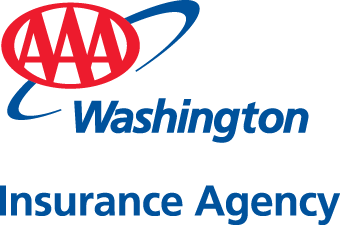Learn the risks to your home and property
You may not live by a river, on the coast or in an area that’s at high risk for flooding, but that doesn’t mean you don’t need flood insurance. Nationwide, floods are the No. 1 natural disaster risk factor in the United States. Floods also tend to cause a huge amount of damage. Even an inch of water pooled inside your home can wreak havoc — and, unlike with a windstorm or a fire, you won’t be covered by a standard homeowners’ policy.
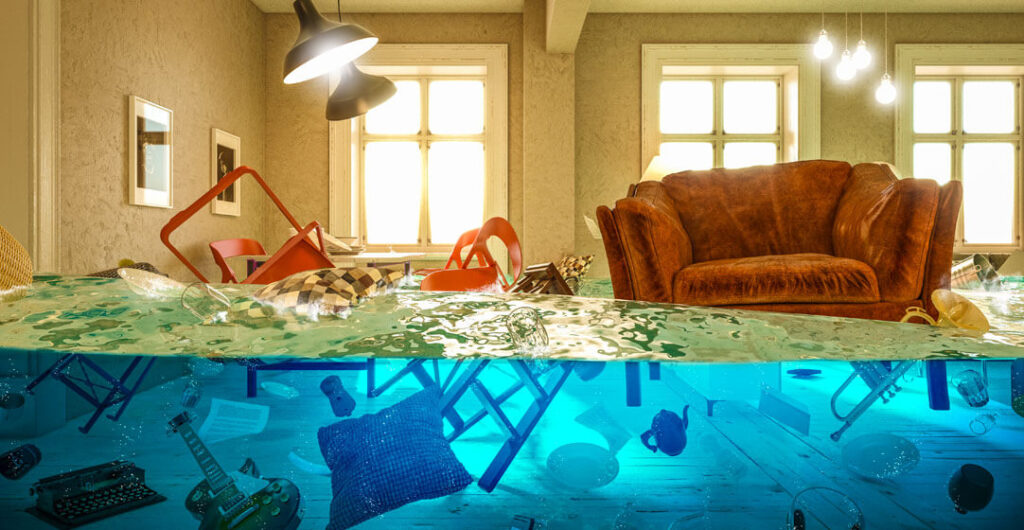
What your home policy does and doesn’t cover
Most homeowners take out a standard home insurance policy when they buy a home (and it is usually required to get a mortgage). This will cover fires and other interior and external damage in several scenarios. For example, if a big windstorm damages the roof, you most likely would be covered if the roof was in good condition before the storm. However, several natural disaster scenarios are excluded from the coverage in a standard home policy — and one of those is flooding.
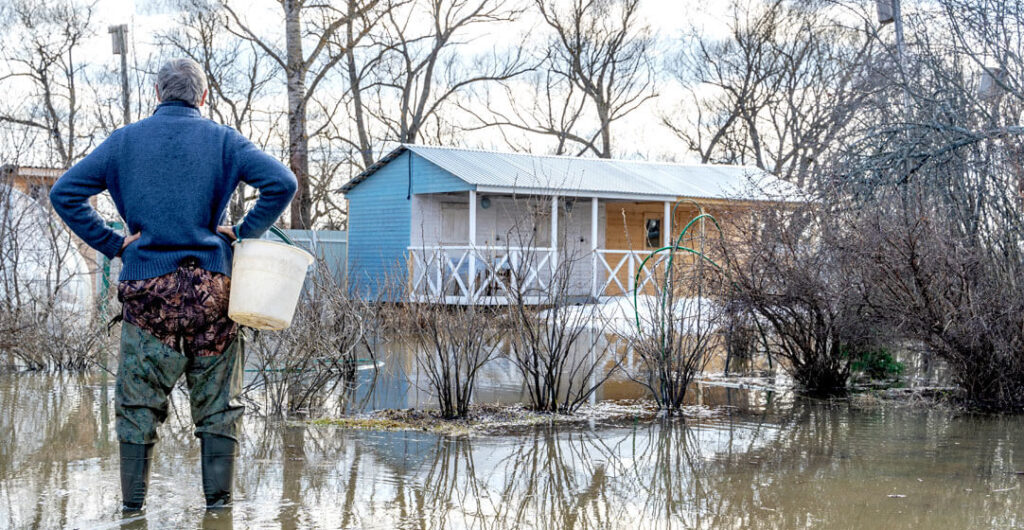
What is considered a flood?
FEMA defines a flood as a “partial or complete inundation” of 2 or more acres of normally dry land, or of two or more properties. This can be overflowing inland water or tidewater, mudflows or surface water. Note that your flood insurance won’t cover all types of water damage to your home. Insurers don’t consider drain and sewage backups as flooding. Water and sewer backups won’t be covered by your flood policy or by a standard homeowners’ policy. (You typically need separate drain and sewage coverage to protect yourself from backups.)
Likewise, if your dishwasher or washing machine malfunctions and ruins your kitchen floor, that wouldn’t be considered flooding. (Under some circumstances this would be covered by a home policy.) Only claims that meet the definition of a flood will be paid by a flood policy.

Is flood coverage automatically sold with a home policy?
No, you have to buy a separate policy. If you live in a high-risk area for a flood, mortgage lenders will usually require you to get flood insurance as a condition of a mortgage. Most people in high- and moderate-risk areas obtain flood coverage through FEMA’s National Flood Insurance Program. It is available to around 23,000 participating NFIP communities across the U.S. through a network of more than 50 insurance companies, including AAA, or via FEMA directly. In other words, these insurance companies write their own policies using federal guidelines. There are also private flood insurance options outside the federal program.
The easiest way to obtain NFIP flood insurance or private flood insurance is to call an insurance agent.
Tip: You don’t necessarily have to be a homeowner to obtain flood insurance. Renters can also obtain coverage through the NFIP program to cover their possessions.
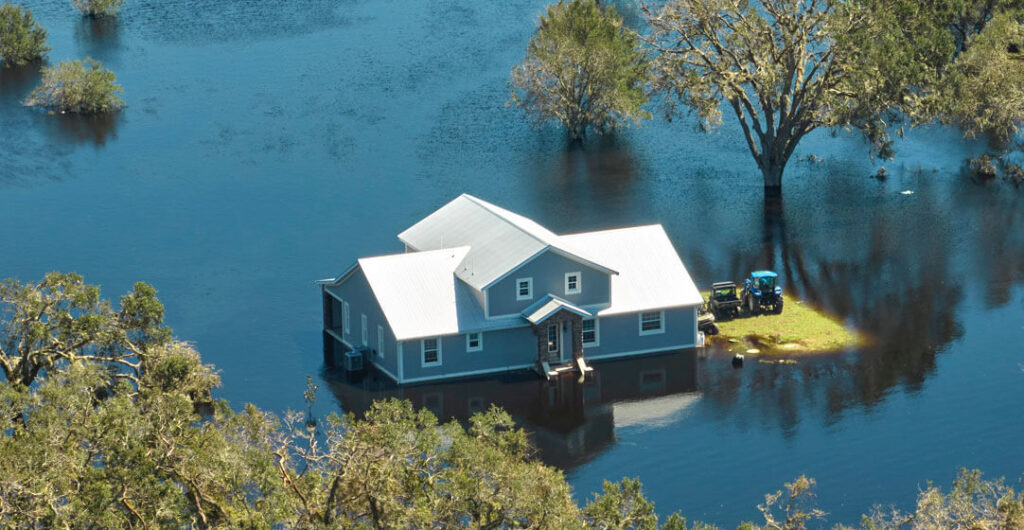
What is covered?
Flood insurance is broken up in two parts that are usually sold separately. The first part offers coverage for the building; and the other part, for personal items. Coverage for the building includes the building and its foundation, electrical, heating and air conditioning systems, and permanently installed fixtures. The maximum limit of coverage for FEMA’s program is $250,000 for a home and $500,000 for a commercial building. Additionally, you can also buy contents coverage to cover the loss of personal items up to $100,000 or $500,000 for non-residential items.
Tip: Private flood insurance may be a best option for people with high-value homes. Private insurance can be more flexible and tailored to a person’s needs, be bundled with auto, home and umbrella coverage, and protect a much greater percentage of the home’s replacement value and personal items. Plus, some private flood companies do not require a waiting period for coverage, and can include additional coverages, such as the loss of use of the home, which the federal program does not cover.
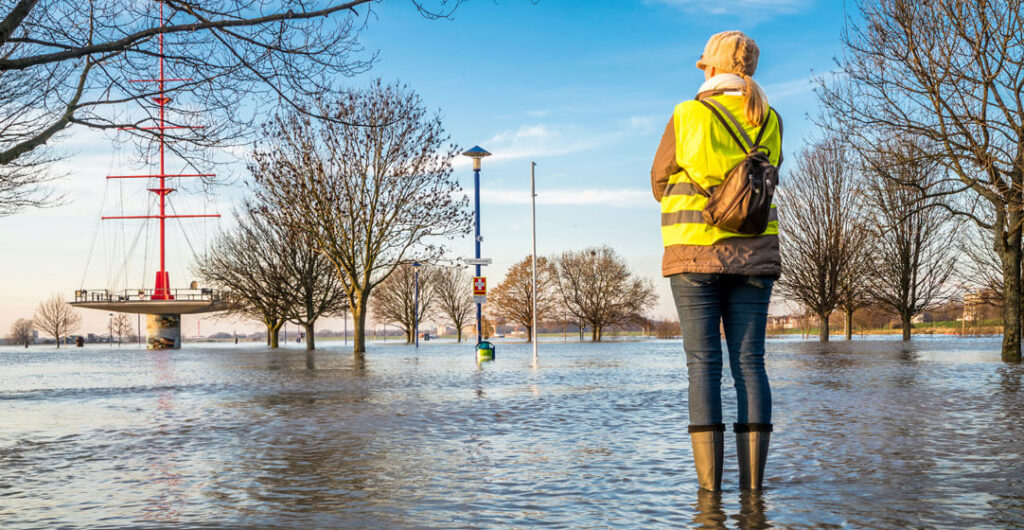
Why buy flood insurance? Here are 7 reasons.
1. Washington has a lot of water.
The Evergreen state has over 4,842 square miles of water, including lakes, rivers, streams and, of course, hundreds of miles of coastline. Plus, some parts of the state receive up to 200 inches of rainfall and snow a year, while the state’s arid regions are at risk for flash flooding in sudden, heavy rainstorms. All this water brings a risk for flooding and catastrophic damage to homes and property.
2. Flooding is the No. 1 natural disaster risk.
According to FEMA, floods cause $5 billion in damage on average per year in the U.S., the most of any severe weather-related event. With climate change, the threat is projected to rise significantly in the coming decades. Washington state has had its share of devasting floods, including a bad flood in 2015 that washed away homes in Hoquiam and brought waist-deep water to the streets and buildings of downtown Aberdeen. Also in 2009, Washington experienced some its worst flooding on record through heavy rain and snowmelt, with $125 million in damage to roads, buildings and government structures.

3. You don’t have to live in a high-risk area.
Almost anyone can experience a flood. People who live outside high-risk areas in moderate and low-risk areas as defined by the federal government file more than 25% of flood claims nationwide, FEMA says. Unfortunately, many people who do experience an unexpected flood don’t know that a homeowners’ policy won’t cover it.
4. Floods cause major damage to homes.
Even relatively minor floods can wreak a lot of damage. According to FEMA, just 1 inch of water in a single-story, 1,000 square-foot home can cause around $11,000 worth of damage, while a foot of water in a 2,500 square-foot single-story home can cause more than $29,000. Just 3 inches of floodwater in a home often requires replacing drywall, baseboards, carpets and furniture. A flood of 18 inches can ruin your electrical, heat and cooling systems, appliances, doors and cabinets. And these are examples where the homes can be saved. Floods and mudslides can also crumble foundations and wash away homes.

5. Homes in flood plains are at more risk of a flood than a fire.
People living in flood plains are 27 times more likely to experience a flood during their 30-year mortgage than they are to experience a fire, according to FEMA. Fires are almost always covered under a standard homeowners’ policy while floods aren’t.
6. Lots of factors can cause localized flooding.
You don’t need a massive storm to cause flooding. A large development spurt in an area that creates new roads, homes, apartments, stores and office buildings can affect drainage patterns and may put your home at higher risk for a flood. Upstream debris in rivers and mudslides can also cause localized flooding. Also, the spring runoff and snowmelt is a yearly threat for those living near streams and rivers.
7. Flood insurance is relatively affordable.
For those who live outside of high-risk areas, flood insurance is relatively affordable.
The average premium across the entire U.S. is about $700 annually, but it can cost much less or more than that. In Washington state, for example, flood policies can be as low as under $300 per year and as high as several thousand dollars annually. Your rate is determined by the property’s unique flood risk. FEMA recently started a new rating system that considers the frequency of flooding in an area, and various types of risks, such storm surge, river overflow and rainfall, the distance from a water source, your home’s rebuilding costs and the elevation of the home. The easiest way to get a ballpark figure of the cost is to call an insurance agent and discuss options.
As with other types of insurance, hopefully you’ll never experience even a minor flood, or ever have to file a claim. But it’s also important to understand that the purpose of flood insurance is to protect yourself and your family from a catastrophic financial loss. For peace of mind alone, it is worth understanding your risks and reaching out to a AAA agent to discuss all your options.
—Written by AAA Washington staff
—Top photo: Victor Zastolskiy/AdobeStock.

